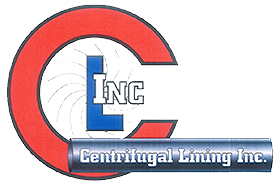Manning’s n Coefficient: Based on field observations the projected “n” value will range from 0.013 to 0.020. We recommend that a conservative factor of 0.017 be used for calculations. In comparison, existing corrugated metal pipe has a value of 0.022.
Yes. Even though the process does not create any rebound or flow out of the pipe, erosion control socks are placed downstream as a precaution. There are no harmful chemicals leached from the liner materials.
Drop inlet or other protrusions are removed or trimmed back flush to the main pipe to ensure an even application of mortar. They are sealed to the main pipe and temporarily plugged during the lining operation.
CentriPipe is a true structural repair. The amount of structural reinforcement is determined by the final thickness of the liner. We typically design for fully deteriorated pipe. Pumping volume and retrieval speed ensures the proper thickness during application. Multiple passes are made to match the liner design thickness.
PL-8000 liner has excellent adhesion properties and self-bonding properties but our design assumes no bonding whatsoever to the host pipe. This is designed as an additional factor of safety.
We focus on pipe diameters 30” and larger which may be round, elliptical, arched, square or similar. Costs will vary depending on access, flow diversion requirements, condition of the original pipe and liner thickness. We are pleased to provide estimates for specific information or projects.
The installed, seamless liner has the same life as new concrete pipe, but with the added advantage of much higher material strength that is free of any joints. The Army Corp of Engineers gives a design life to concrete storm pipe of 75 to 100 years.
The lining material is resistant to dilute pesticides, fertilizers and petroleum products. The use of ConShield antibacterial additive can be used in the lining material when microbiologically induced corrosion is present.
The bottom is restored before final lining using PL 12000. This is a very dense, high strength, fiber reinforced concrete that flows like self-levelling concrete to fill all voids under the pipe. This may be all that is needed in some pipe and PL 12,000 can be used to restore the invert prior to slip lining or cured-in-place lining.
Our material provides abrasion resistance greater than standard concrete because our products are at least twice as strong. For example, our prepackaged engineered product (PL 8000) has a compressive strength of 8,000 psi while standard concrete is typically 4,000 psi. PL 12000, which is used to repair the corroded base on corrugated metal pipe, has a compressive strength of 12,000 psi. Abrasion tests performed by CALTRANS on our materials exceeded their requirements.

